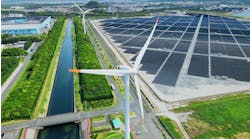Earlier this year the United States Energy Information Administration (EIA) released its Annual Energy Outlook for 2021 (AEO2021) that explores the nation’s long-term energy trends to provide modeled market projections through 2050. Based on key findings, the EIA projects that average annual commercial energy consumption will grow slower than floorspace over the next 30 years, at 0.6% and 1.0%, respectively.
The EIA’s more recent Summer 2021 Electrical Industry Outlook also projects that economic improvement will drive a 1.5% increase in electricity sales this summer compared to the summer of 2020 with the pandemic-related downturn. However, they also project that it could take years to return to pre-pandemic 2019 levels of energy consumption and emissions. That’s no surprise given that between June and August 2020, electricity sales in the commercial and industrial sectors totaled a combined 357 KWh, the lowest since 2004.
While COVID-19 is certainly a contributing factor, the AEO2021 points to smart building technologies, as well as regulations and incentives, as key drivers to projected slower energy-consumption growth.
Primary drivers
According to Kevin Jarzomski, a research analyst for the Annual Energy Outlook, “Projected reduced energy consumption is due to increasing energy efficiency and improving building envelopes.” Based on research by Leidos Inc., the AEO2021 report specifically points to the wider adoption of energy-efficient LED lighting, occupancy sensors, photosensors, dimmers, scheduling, and task tuning as key technology drivers. It also identifies the ability to regulate HVAC systems based on data collected from sensors that measure temperature, air quality, humidity, and CO2 levels, as well as use of economizer controls that pull cool outside air into a building.
The integration of these smart building technologies is also essential to reducing energy consumption, and the AEO2021 projections incorporate estimated percentage reduction from the use of automated fault detection and diagnosis, building energy management systems software, and whole-building submetering. These integration tactics all leverage data from multiple building systems to identify and correct performance issues, automatically control the building, and provide the insight needed to make informed operational decisions.
“The biggest factor to reducing energy consumption is not so much having technologies like LED lighting and smart HVAC systems in place as it is actually knowing how the entire building operates and changing behavior based on that information,” says Colby May, a Texas-based certified energy manager (CEM) and founder of LIT Consulting specializing in energy efficiency. “Reducing energy also takes a top-down approach with actual data to demonstrate the impact of simple choices and incentivize building occupants to be good stewards.”
While smart building technologies are critical to reducing energy consumption, the AEO2021 also points to regulations and incentives as drivers in the commercial and residential building sectors. The report specifically points to “policies at the state and federal level encouraging significant investment in renewable resources.”
“A company might choose to purchase wind energy where it’s available, but it’s solar that is really picking up for commercial office buildings in part due to incentives and being an easier technology to implement,” says May. “Our approach is to first do a complete energy audit and make changes through no-cost measures. Then we look at solar.”
The biggest contributors
The EAI estimates that offices, retail and service buildings, and schools consumed two-thirds of all energy used to heat commercial buildings in 2020.With these three building types collectively accounting for half of U.S. commercial floorspace, the AEO2021 also projects these spaces to be significant contributors to reduced energy consumption. The report projects that increased adoption of HVAC sensors and controls will contribute to a 13% decline in energy consumption to heat offices by 2050, with the second-largest decline in heating energy consumption (9%) occurring in retail and service spaces. The report also projects that schools, hotels, and lodging buildings in particular, which include dormitories, will reduce energy consumption for ventilation by 25%.
“For schools and universities, the second-biggest expense behind salaries is utilities, and 60% of energy use in a school is HVAC. Energy consumption is therefore becoming a huge aspect in decision-making for school districts that have to answer to school boards and strict budgets,” says May. “Twenty years ago, energy management wasn’t really on the radar. We have more than 1200 school districts here in Texas, and today, you likely won’t find a single one without an energy manager.”
According to May, church energy is also an untapped resource. “It’s not just about financial savings. There are more than 400,000 houses of worship in this country that spend $10 billion on energy. Just through no-cost changes, we think that could be reduced to $7 billion, and that is savings that can be redirected to fund meaningful missions and social programs.”
While not highlighting the AEO2021 report, experts also point to a shift in mindset as a key factor to reducing energy consumption in the years to come, especially among millennials who are estimated to make up 75% of the workforce by 2025. “We’re working with clients that want to promote themselves as net zero, which creates a domino effect that encourages others to follow,” says May. “But there is also a generational effect—protecting the environment is the number-one concern among millennials.”
Betsy Conroy is a freelance writer, editor, and content consultant, specializing in business-to-business media and commerce. She has 30 years’ experience writing technical content.



